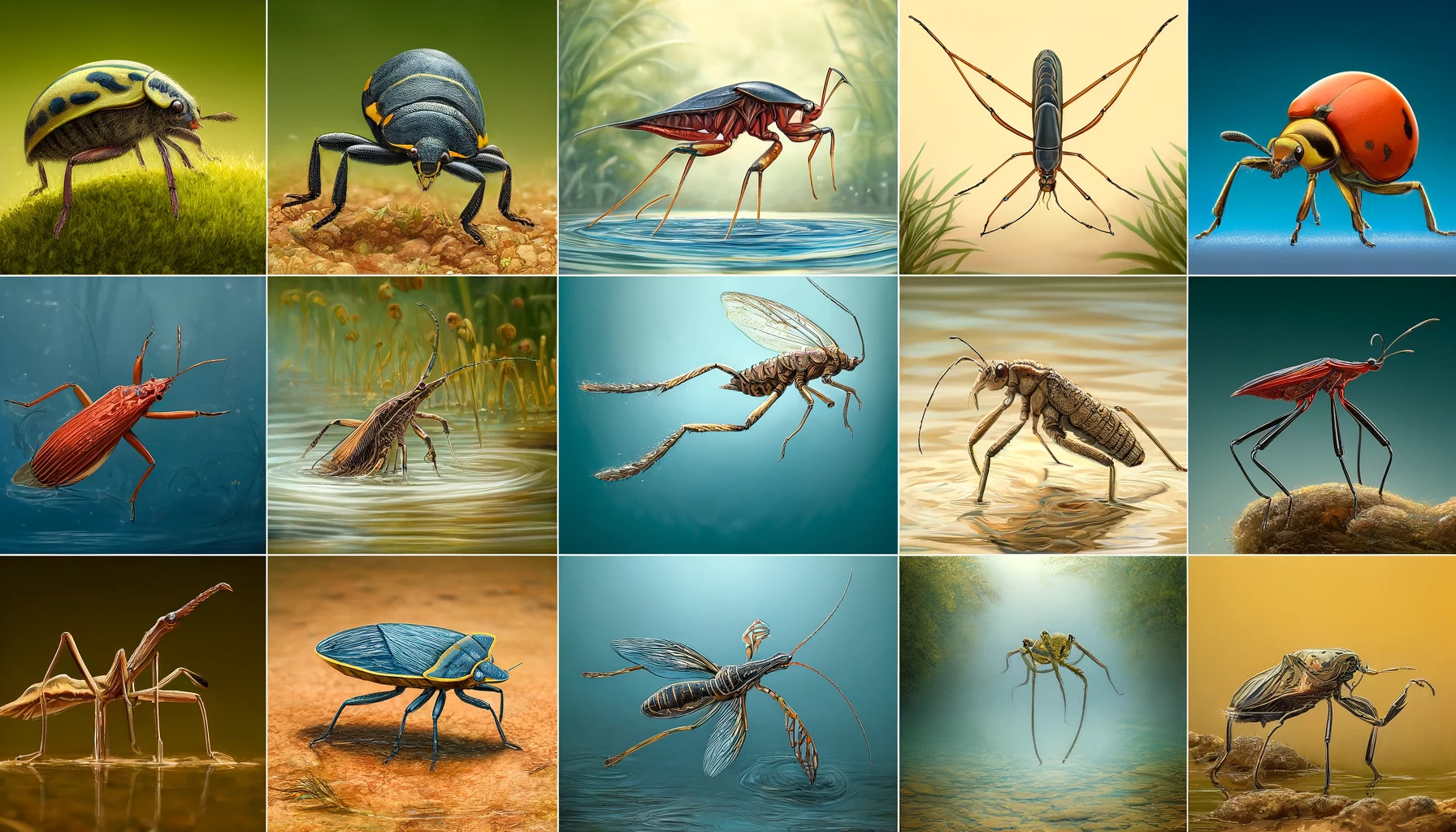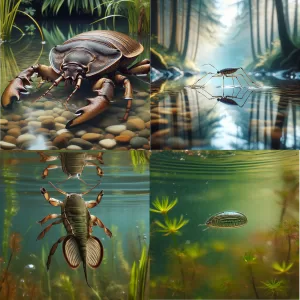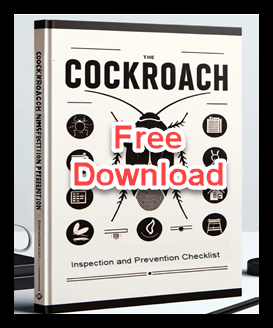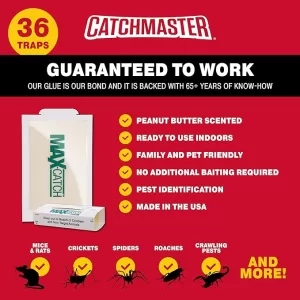How to Get Rid of Water Bugs
 While the term “water bug” often brings to mind images of cockroaches, particularly the Oriental water cockroach, it actually encompasses a variety of aquatic insects that can invade our spaces. These creatures, ranging from the menacing giant water bug to the common backswimmer, can become nuisances in and around water bodies in our homes and gardens. In this guide, we’ll explore effective methods to manage these pests, ensuring your environment remains comfortable and bug-free.
While the term “water bug” often brings to mind images of cockroaches, particularly the Oriental water cockroach, it actually encompasses a variety of aquatic insects that can invade our spaces. These creatures, ranging from the menacing giant water bug to the common backswimmer, can become nuisances in and around water bodies in our homes and gardens. In this guide, we’ll explore effective methods to manage these pests, ensuring your environment remains comfortable and bug-free.
Understanding Water Bugs
Definition and Clarification of the Term “Water Bugs” Versus Cockroaches The term “water bug” is commonly used to refer to various types of insects that live in or near water. While Oriental cockroaches are often called water bugs due to their preference for damp environments, true water bugs belong to different insect families and have distinct characteristics.
Types of Common Water Bugs
-
- Giant Water Bugs (Belostomatidae): Large predatory insects that live in freshwater habitats.
- Water Striders (Gerridae): Insects known for their ability to walk on water surfaces.
- Backswimmers (Notonectidae): Insects that swim upside down and are often found in ponds and slow-moving waters.
- Water Boatmen (Corixidae): Insects that swim right-side up and are usually found in freshwater environments.
Identifying Water Bugs

How to Recognize Different Water Bugs Based on Size, Shape, and Habitat
- Giant Water Bugs: Large, flat-bodied insects with grasping front legs and a penchant for preying on small aquatic animals.
- Water Striders: Long-legged insects that skate across the water’s surface, using surface tension to stay afloat.
- Backswimmers: Recognizable by their habit of swimming upside down and their oar-like hind legs.
- Water Boatmen: Smaller, oval-shaped insects that swim right-side up and are often found in freshwater habitats.
Photos or Illustrations for Visual Identification (Include high-quality images or illustrations of each type of water bug for easy identification.)
Common Habitats and Behavior
Description of Typical Environments Where Water Bugs Thrive Water bugs are typically found in or near water bodies such as ponds, lakes, streams, and slow-moving rivers. They are also commonly found in gardens with water features, swimming pools, and even inside homes where moisture is prevalent.
Behavior Patterns That Attract Them to Human Habitats Water bugs are attracted to areas with abundant moisture and food sources. Overgrown vegetation, stagnant water, and poorly maintained pools can create ideal conditions for these pests.
Preventive Measures
Strategies to Prevent Water Bugs from Settling in Your Environment
- Maintain Cleanliness: Regularly clean and maintain water features, pools, and ponds to prevent stagnation and overgrowth.
- Eliminate Standing Water: Ensure there are no areas with standing water around your home.
- Proper Drainage: Maintain proper drainage systems to prevent water accumulation.
Importance of Water Management and Cleanliness in Preventing Infestations Good water management practices and cleanliness are essential in preventing water bug infestations. Regular maintenance of water bodies and eliminating standing water can significantly reduce the likelihood of an infestation.
How to Get Rid of Water Bugs?
How to get rid of water roaches naturally
Use of Natural Repellents and Barriers
- Diatomaceous Earth: Sprinkle around areas where water bugs are commonly found. It dehydrates and kills insects upon contact.
- Essential Oils: Oils like eucalyptus, lavender, and peppermint can act as natural repellents when sprayed around water bug-prone areas.
Home Remedies That Are Safe and Effective
- Vinegar and Water Spray: A mixture of vinegar and water can be an effective natural deterrent when sprayed in affected areas.
- Boric Acid: Applying boric acid near water bug habitats can help control their population.
What kills water bugs instantly?
Chemical Controls
Recommended Insecticides and Their Safe Application
- Baits and Insecticides: Use products specifically designed for water bugs, following the manufacturer’s instructions for safe application.
- Surface Sprays: Apply insecticidal sprays around entry points and common hiding spots to eliminate water bugs.
When and How to Use Chemicals for Effective Control Chemicals should be used as a last resort when natural methods are ineffective. Apply insecticides in targeted areas where water bugs are active, and always follow safety guidelines to avoid harm to pets and humans.
Professional Pest Control Solutions
When to Call a Professional If your water bug infestation is severe or persistent, it may be time to call a professional pest control service. Professionals have the expertise and tools to handle large infestations effectively.
What to Expect from Professional Pest Control Services Professional pest control services will conduct a thorough inspection of your property, implement targeted treatments, and provide follow-up visits to ensure the infestation is fully resolved.
Maintenance and Monitoring
Regular Practices to Keep Your Area Water Bug-Free
- Regular Inspections: Routinely check water bodies and damp areas for signs of water bugs.
- Consistent Cleaning: Maintain cleanliness and proper water management practices to prevent re-infestation.
Tools and Techniques for Ongoing Monitoring
- Sticky Traps: Place sticky traps around potential entry points to monitor water bug activity.
- Periodic Treatments: Schedule regular pest control treatments if necessary to maintain a bug-free environment.
By understanding the types of water bugs, their habitats, and effective control measures, you can protect your home from these unwelcome pests. Consistency in preventive efforts and prompt action at the first sign of infestation are key to keeping your environment comfortable and bug-free.
Stay vigilant and proactive in managing water bugs. Act swiftly at the first signs of infestation, and don’t hesitate to consult professionals for severe situations to ensure your home remains pest-free.
Palmetto Bug (often mistaken for a water bug)
A palmetto bug is a common name for certain large cockroaches, particularly the American cockroach (Periplaneta americana), which are often found in the southeastern United States. The term “palmetto bug” is used because these cockroaches are frequently found in and around palmetto trees. While the name suggests a specific type of insect, it typically refers to any large cockroach seen in the region.
Palmetto Bug Characteristics
- Appearance: Palmetto bugs are usually reddish-brown with a yellowish figure-8 pattern on the back of their heads. They can grow up to 1.5 inches or longer.
- Habitat: These cockroaches thrive in warm, humid environments and are commonly found in basements, sewers, and other damp areas. They can also be found in homes, particularly in kitchens, bathrooms, and crawl spaces.
- Behavior: Palmetto bugs are nocturnal and will scatter when exposed to light. They can fly short distances, which can be startling to homeowners.
Relation to Water Bugs
- Misidentification: People often confuse palmetto bugs with other types of large, water-loving insects due to their size and the damp environments they inhabit.
- Overlap in Control Methods: Many of the preventive and control measures for water bugs, such as maintaining cleanliness, reducing moisture, and using insecticides, are also effective for controlling palmetto bugs.
How to Get Rid of Palmetto Bugs
- Sanitation: Keep your home clean, especially in the kitchen and bathroom areas. Avoid leaving food out and store food in sealed containers.
- Moisture Control: Fix leaky faucets and pipes, use dehumidifiers, and ensure proper ventilation to reduce humidity levels.
- Sealing Entry Points: Inspect your home for cracks and gaps, particularly around doors, windows, and the foundation. Seal these entry points to prevent palmetto bugs from entering.
- Bait and Insecticides: Use bait stations and insecticides designed for cockroach control. Place them in areas where palmetto bugs are likely to be active.
- Professional Pest Control: For severe infestations, professional pest control services may be necessary. They can provide thorough inspections and targeted treatments.
Understanding the distinctions between various pests, including water bugs and palmetto bugs, is essential for effective pest management and maintaining a comfortable living environment.
- The Life Span of a Cockroach
- Do Cockroaches Eat Clothes?
- Do Cockroaches Have Teeth?
- Shrimps and Cockroaches
- Will Sleeping with the Light On Keep Cockroaches Away?
- How to get roaches out of your car overnight
- Do Cockroaches Feel Pain?
- How Many Legs Do Cockroaches Have?
- Comparing Cockroach Eggs Size for Different Types of Cockroaches
- Identifying a Cockroach Bite on the Lips or Face
- Black Water Bug Identification and Control
- Why Do Water Bugs Come Out At Night?
- What Does Roach Rash Look Like?
- Can Cockroaches Bite Your Eyelid?
- Can Cockroaches Live in Your Balls?
- How did cockroaches get their name?
- Why Do Cockroaches Shed Their Skin?
- What Smell do Palmetto Bugs Hate?
- Baby Palmetto Bug: Identification and Control
- Cockroach Eggs vs Poop: How to Tell the Difference
- How to Get Rid of Water Bugs
- How Long Can a Cockroach Live Without Air?
- The Lifecycle of the German Cockroach: From Egg to Adult
- Do Mice Eat Roaches
- Wood Roach vs. Cockroach

